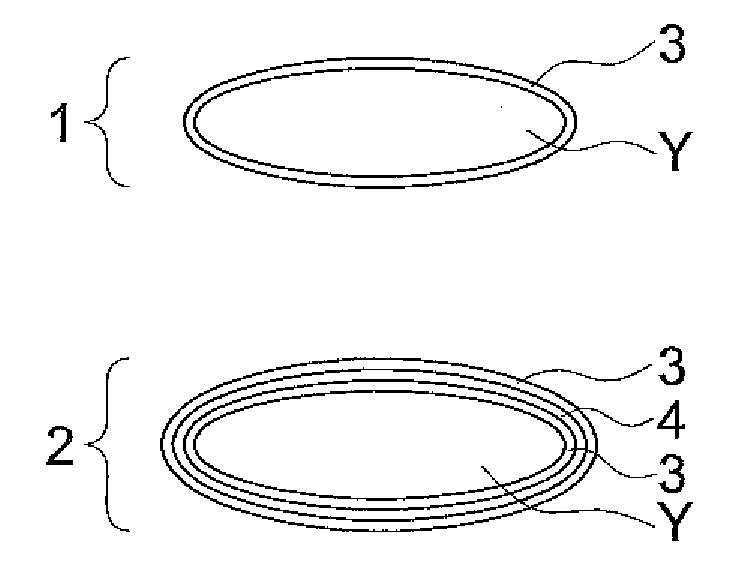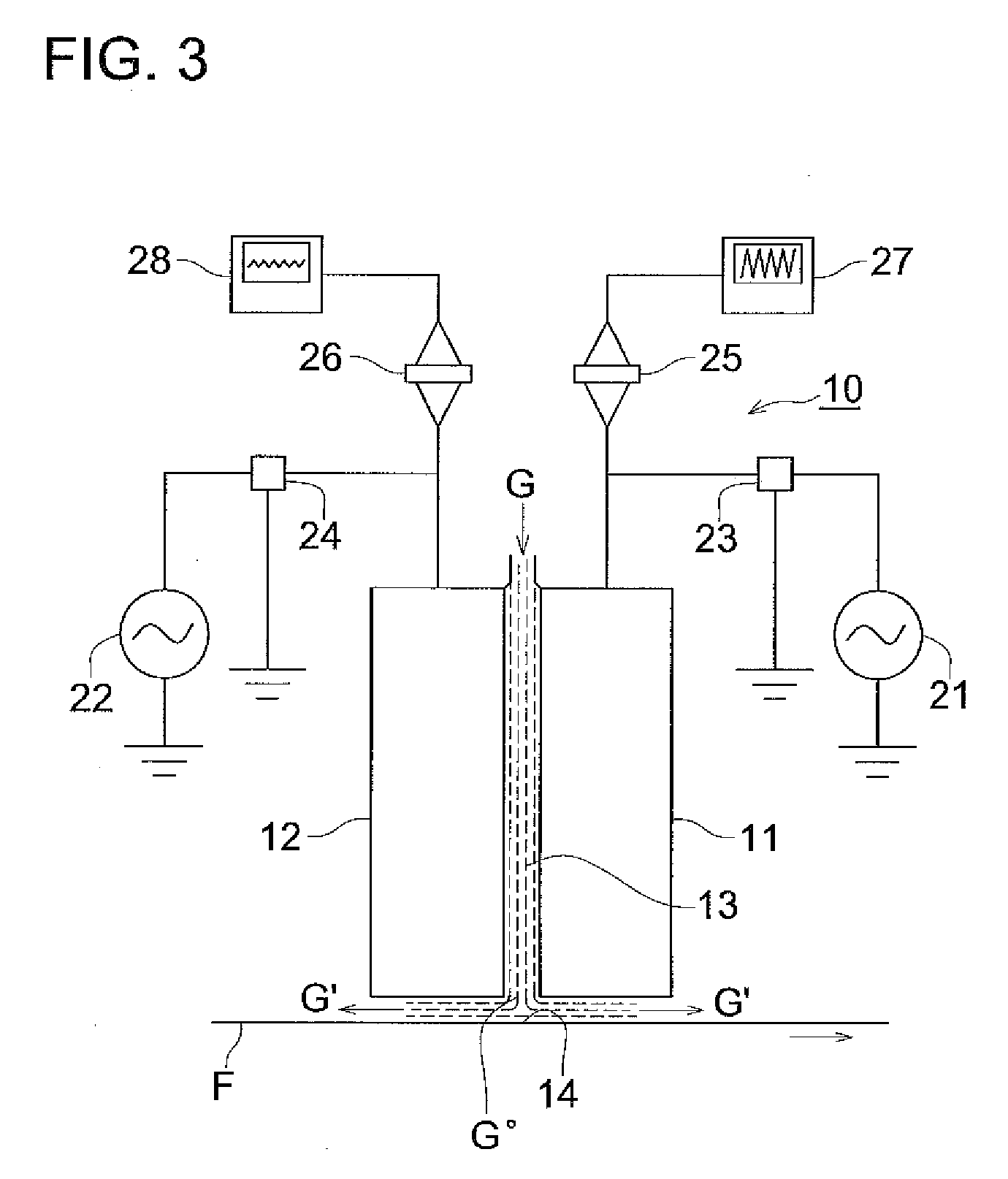Plastic optical element with gas barrier film, its manufacturing method and optical pickup device employing the element
- Summary
- Abstract
- Description
- Claims
- Application Information
AI Technical Summary
Benefits of technology
Problems solved by technology
Method used
Image
Examples
example 1
[0171]Plasma discharge processing was performed using the stage electrode type discharge processing apparatus shown in FIG. 4, and a ceramic layer was formed on a substrate described below. In the discharge processing apparatus, a plurality of rod-like electrodes were arranged facing the stage electrode in parallel with the transporting direction of the substrate in such a way that materials (discharge gas, reaction gas 1, 2 described later) and electric power can be supplied to each electrode.
[0172]The dielectric for coating each electrode, together with the opposing electrode, was coated on the ceramic spray electrode to a thickness of 1 mm on one side. After coating, the gap between the electrodes was set to 1 mm. Further, the base metal coating the dielectric was designed as a stainless steel jacket having a cooling function by coolant. Electrode temperature was controlled by coolant during the process of discharging. The light source used in this case was a high frequency power...
example 2
[0187]A layer having the following layer structure was formed on the substrate according to the same procedure in the same manner as in Example 1, using a Plasma CVD apparatus, Model PD-270STP produced by Samco Inc.
[0188]Each layer in Samples Nos. 6 through 10 was formed as follows:
[0189]Oxygen pressure: Gas pressure was changed between 13.3 and 133 Pa as shown in Table 2.
Reaction gas: Tetraethoxy silane (TEOS) at 5 sccm (standard cubic centimeter per minute)
Power: 100W at 13.56 MHz
[0190]Retained substrate temperature: 120° C.
[0191]Samples Nos. 6 through 10 had a ceramic layer with a composition of SiO2, and had a density of 2.13.
[0192]Adhesion layer was formed in the same manner as the above ceramic layer formation conditions, provided that power application was reversed, the electrode on the side supporting the substrate being grounded and high frequency power being applied to the opposed electrode. The adhesion layer of each sample had a composition of SiO1.48C0.96. Sample Nos. 6...
example 3
[0198]Sample Nos. 11 through 20 were prepared in the same manner as in Sample Nos. 1 through 10 described above, respectively, except that a resin substrate as described later was used instead of the substrate.
[0199]Inorganic layer comprised of Si and O having a thickness of 100 nm was formed on the resin substrate by sputtering according to a method disclosed in Patent Document 3 (Japanese Patent O.P.I. Publication Nos. 2004-361732). In sputtering, a silicon plate was employed as a target, and gas to be introduced was Ar / O2 (=45 / 55 by sccm), layer formation pressure 0.7 Pa, and discharge electric power 2 kW.
[0200]Then, a polyurethane-based anchor coat (product of Mitsui Takeda Chemicals, Inc.; main agent, Takelac A-310; curing agent, Takenate A-3) was applied to the surface of the inorganic layer 14 and dried; thereafter, using Saran Latex of ASAHI KASEI CORP., a polyvinylidene chloride film was formed as an organic layer in a thickness of about 800 nm.
[0201]The anchor coat and the...
PUM
| Property | Measurement | Unit |
|---|---|---|
| Pressure | aaaaa | aaaaa |
| Pressure | aaaaa | aaaaa |
| Percent by volume | aaaaa | aaaaa |
Abstract
Description
Claims
Application Information
 Login to View More
Login to View More - R&D
- Intellectual Property
- Life Sciences
- Materials
- Tech Scout
- Unparalleled Data Quality
- Higher Quality Content
- 60% Fewer Hallucinations
Browse by: Latest US Patents, China's latest patents, Technical Efficacy Thesaurus, Application Domain, Technology Topic, Popular Technical Reports.
© 2025 PatSnap. All rights reserved.Legal|Privacy policy|Modern Slavery Act Transparency Statement|Sitemap|About US| Contact US: help@patsnap.com



